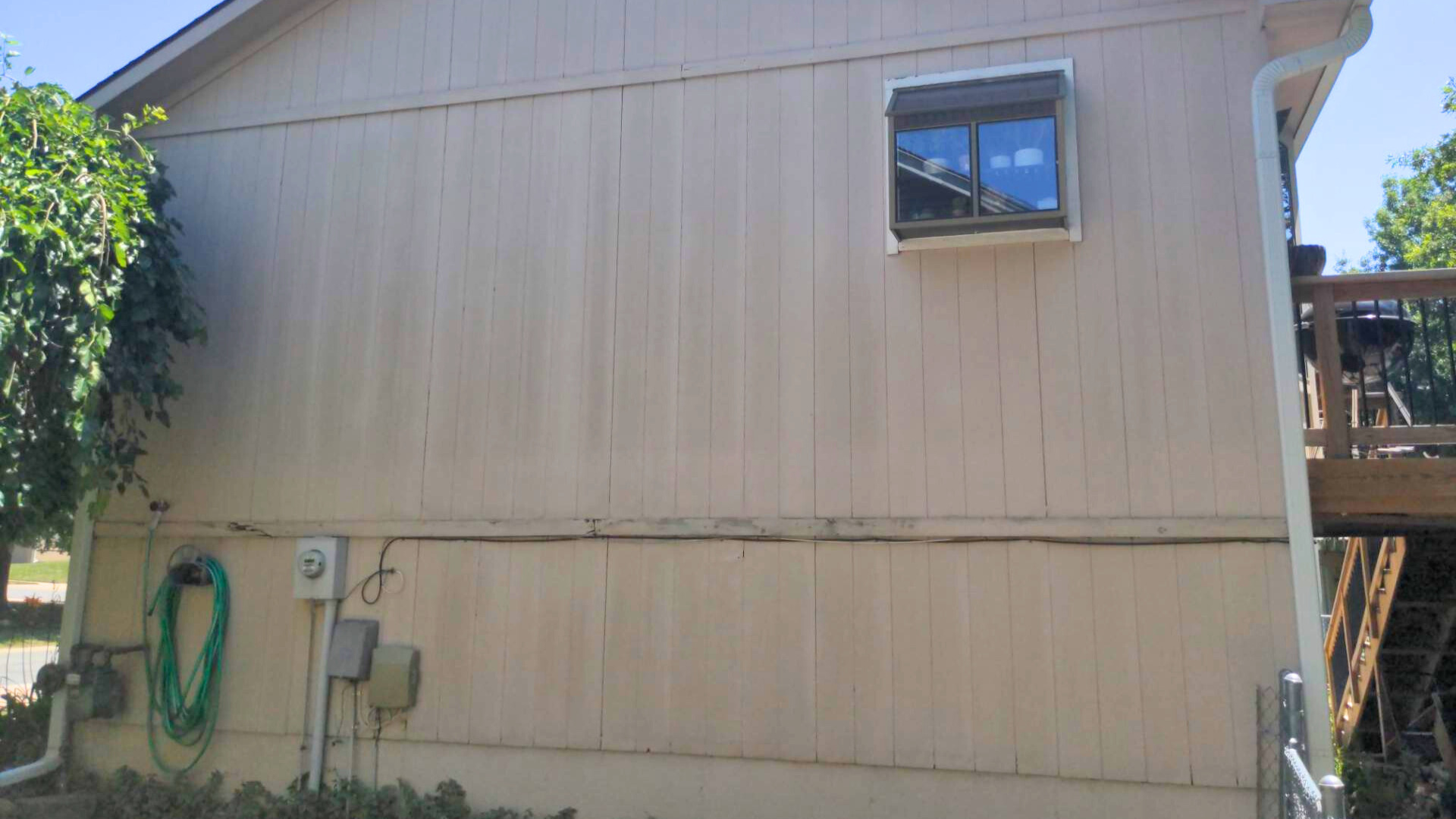Your siding is one of the most important features of your home—creating beautiful curb appeal as it prevents damage from the weather and pests. Over time, small damage can arise to your exterior—and it pays to recognize issues and deal with them promptly, so your siding remains durable and effective.
These tips will help you spot the most common siding issues you’re likely to face—with fixes so you can address them and preserve your home’s value with a siding repair or replacement.
6 Signs of Siding Damage—and Their Solutions
1. Moisture Damage
Siding’s number-one role is to create a layer of protection against one of your home’s biggest enemies—moisture. When water sneaks under your home’s protective layer, the wood that forms your house’s frame can rot, leading to all sorts of problems—from structural issues to unhealthy mold growth and other hassles.
Signs to look for:
- Rotten wood
- Water stains on home exterior (and even on interior walls)
- Discolored, peeling paint
- Brown or black mold and mildew spots
To solve moisture damage, you’ll need to:
- Find and address the source of the leak.
- Remove and replace any rotted wood.
- Ensure gutters are draining water safely away from your home.
2. Cracks and Gaps
Siding can crack (or dent) when struck by hail, wind-blown debris, stones cast by a lawnmower, and even stray baseballs while the kids are playing. These cracks and gaps allow water to get behind the boards, where it will damage your structure.
Signs to look for:
- Broken, cracked siding
- Spaces between the boards that shouldn’t be there
- Gaps between the panel and your home’s exterior wall
To solve cracks and gaps:
- If the hole is very small and isolated, a patch kit may work. (Check the kit to be sure it’s safe for your material type.)
- For significant dents, cracks, and gaps, siding replacement is the best approach.
3. Pest Infestation
Woodpeckers, carpenter ants and bees, and dreaded termites can create a lot of problems for your home. They infiltrate your exterior, looking for food and a place to nest. Woodpeckers like to drum wood to attract mates. Ultimately, pests create vulnerabilities in your panels that open the door to moisture intrusion, so you have to address this issue promptly.
Signs to watch for:
- Small holes in wood boards
- The noise of drumming on your siding
- Small piles of wood shavings around your foundation
To solve pest infestation:
- Have bug infestations treated by a professional pest control company.
- Discourage pests of all kinds—for good—by installing pest-resistant siding. (Vinyl, fiber cement, stucco, and stone veneer are great choices!)
4. Fading or Discoloration
Age-related deterioration can cause the shade of your siding to fade, become discolored, or generally look worn down. UV light from the sun is the main culprit here, though other issues like acid rain and oxidation due to oxygen exposure can also cause siding color to fade.
Signs to look for:
- Patches of siding that don’t properly match other areas
- Panels that look worn or unappealing due to discoloration
- Chipped or peeling paint
To solve fading and discoloration:
- Clean siding twice a year with soap, a soft bristle brush, and a garden hose.
- Paint wood boards regularly (every 5-7 years).
- Invest in a fade-resistant, vibrant solution such as James Hardie siding.
5. Loose or Missing Boards
Strong storms like the ones common in the Kansas City area can pummel your home. If your siding was installed with poor technique, the boards may loosen and even break free entirely. And this obviously puts your structure at risk of moisture damage.
Signs to watch for:
- Boards that hang loosely or are partly (or completely!) detached
- Nails that have popped out of place
- Caulking that’s cracked, loose, or missing
- Creaking noises (a sign siding is expanding and contracting too much)
To solve loose or missing boards:
- Inspect your exterior after every strong storm to look for damage.
- Have a local home maintenance contractor replace missing boards.
- If the issue is due to improper installation, the best solution is replacement by a siding team that is well-trained and committed to excellence (like us!).
6. Warping or Buckling
Shifts in temperature and high moisture levels in the air due to humidity can wreak havoc with your home. These weather changes are particularly harsh on wood siding, but they can also cause problems for stucco (moisture prone!) and vinyl (which tends to expand and contract a lot). Left unchecked, water damage is probably around the corner for your home.
Signs to watch for:
- Wavy, misshapen boards (not flat like they should be)
- Nails that are loose or missing
- Weather damage to other areas of your home (if you have damage elsewhere, your siding should be inspected too)
To solve warping and buckling:
- Choose a high-quality siding. (Don’t skimp!)
- Vet your contractor to be sure they are experienced in installing your chosen siding.
- Paint or stain wood regularly to prevent warping.
- Replace damaged boards—or better yet, install a material that resists damage like this.
Should You Repair or Replace Damaged Siding?
Maintaining your siding is essential because once problems start to arise, it gets harder and harder to fix the issue. Repairing the boards is a short-term solution, at best.
Siding replacement is worth the investment, as it’s a permanent solution to any problems you’re seeing. And today’s materials, such as vinyl, stone veneer, and fiber cement, are designed to give you long-lasting, low-maintenance performance you can count on.
Protect Your Kansas City Home with Lasting Siding Installed by Local Pros
Remember—the best way to put an end to your siding woes is to replace it with durable, eye-catching new siding you can count on. You’ll give your home a beautiful look that also keeps moisture, pests, and weather damage at bay for years to come.
Don’t let small signs of damage get worse! Smart Exteriors is always here to help! Check out how replacement siding can give you lasting confidence in your home—and reach out to us with any questions or to set up a consultation.

